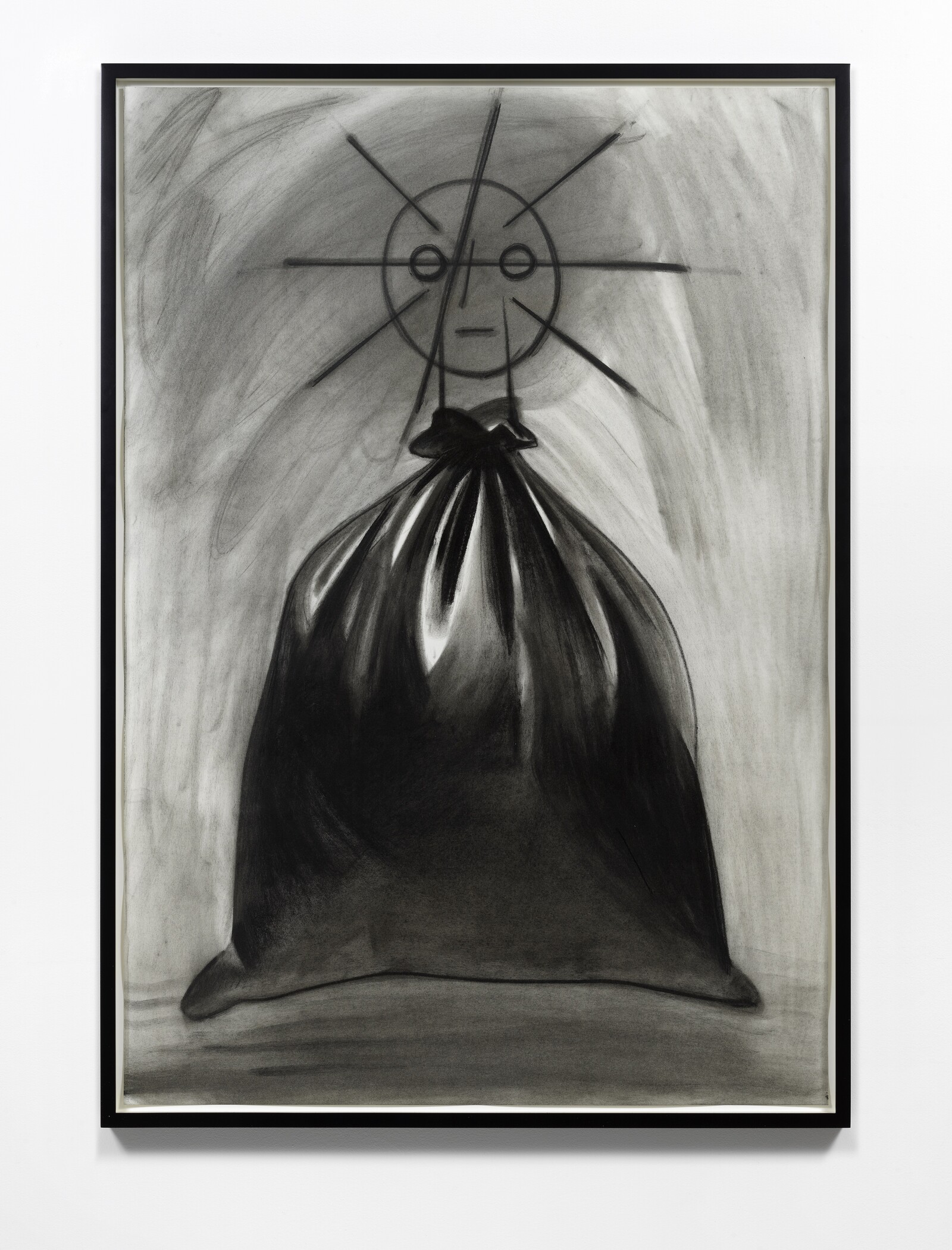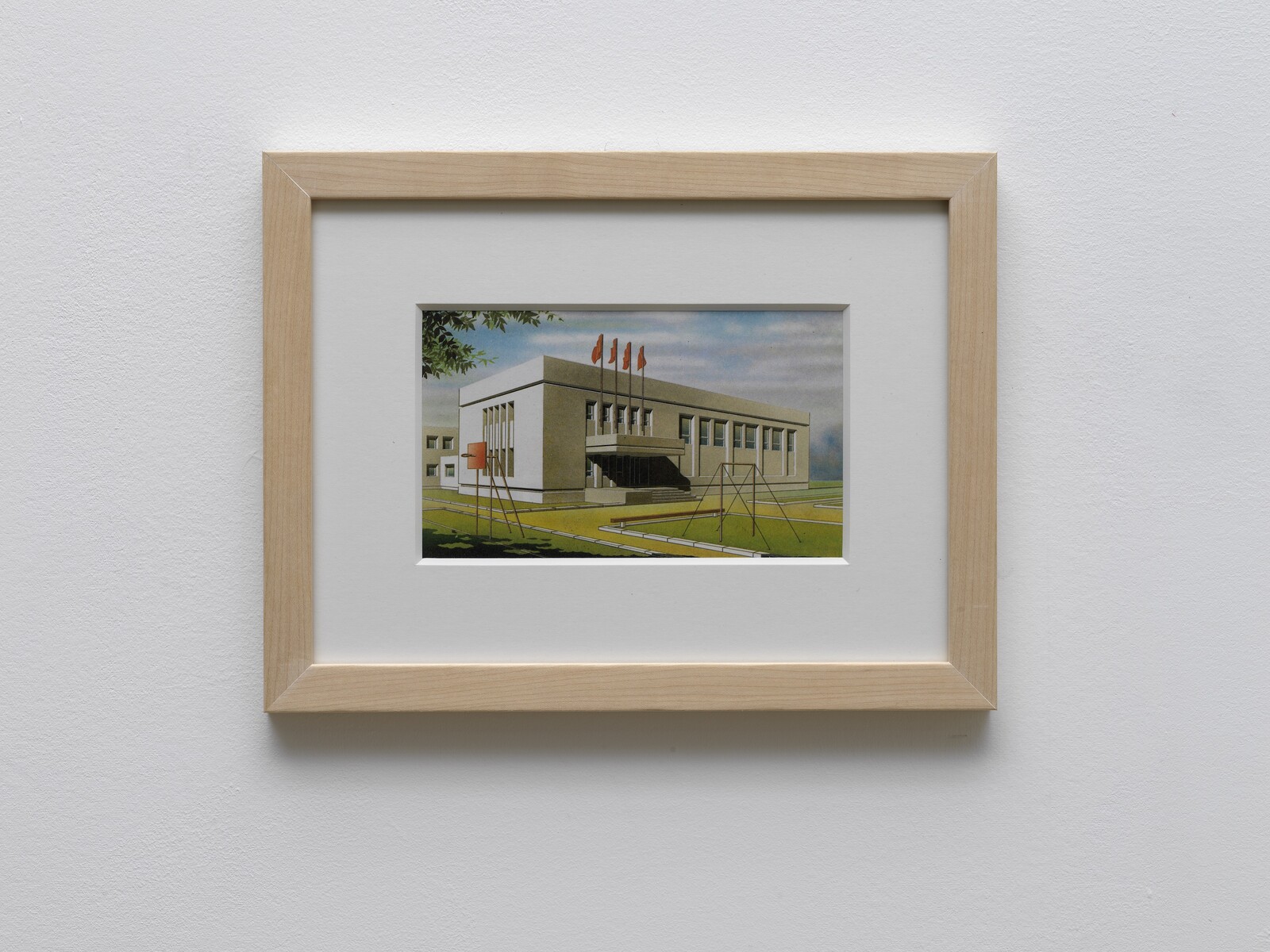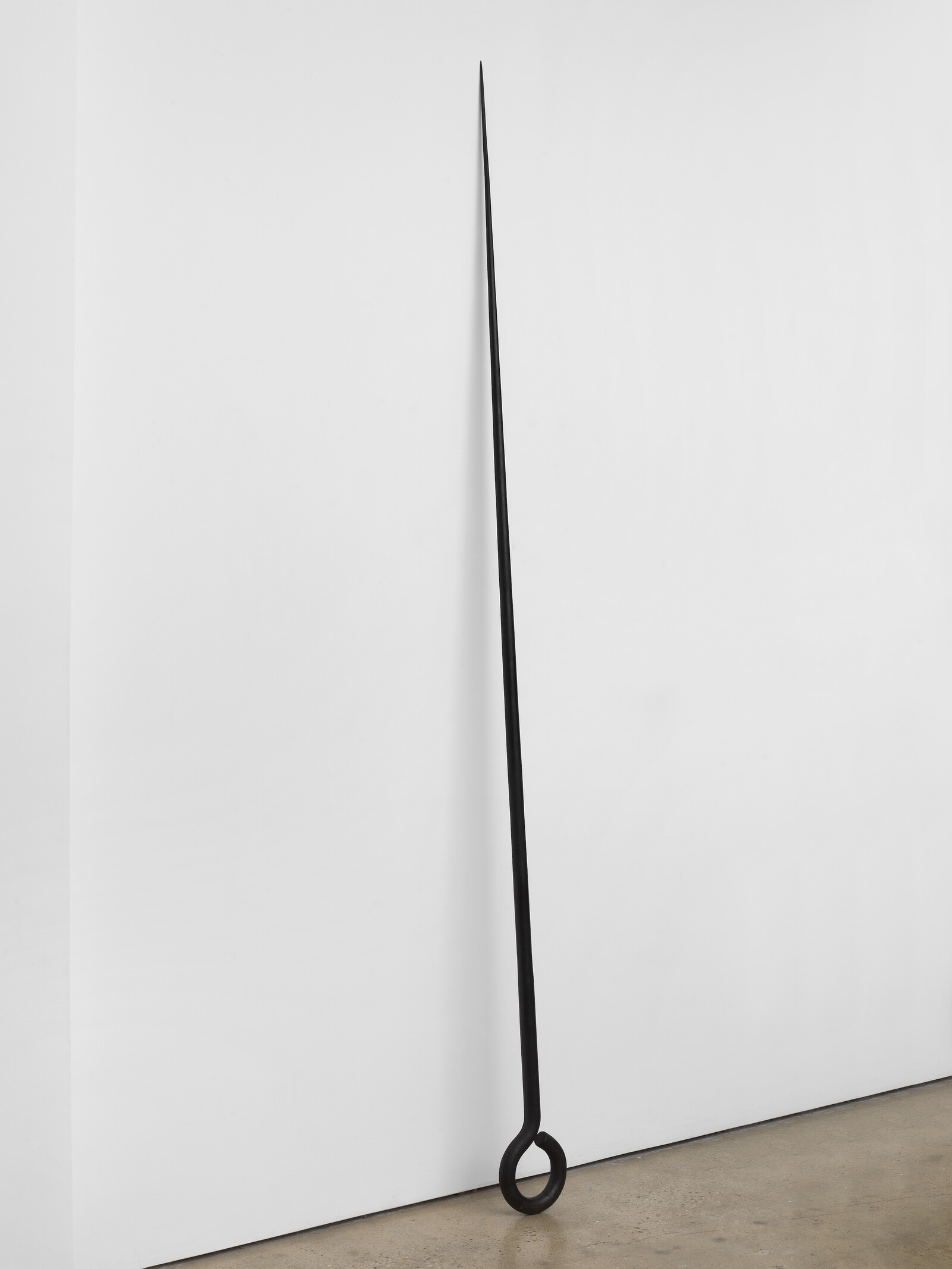The 1913 opera Victory over the Sun describes an attempt to capture the sun in order to overthrow linear time and reason. The work ushered in artistic traditions that came to shape Soviet Futurism: it’s where Malevich’s black square, for instance, made its first appearance (on a set curtain). Nikita Kadan’s exhibition, which takes its title from the opera, is anchored by a wall-hanging neon sculpture entitled Private Sun (2022) which refers to a classic of Soviet-era design: a window grate, ubiquitous in large apartment buildings, with bars like the rising sun. Where the avant-garde original advocated for the destruction of the present to clear a path for the new, the Ukrainian artist’s use of the architectural feature suggests a darker notion: of being held captive in someone else’s idea of the future.
Hanging in the main space of the gallery is a series of charcoal drawings. In one, titled A Sun-headed character in a garbage bag (2022), Kadan renders a black trash bag akin to those rumored to have been used to transport the bodies of soldiers killed during Russia’s invasion. Over the trash bag presides an unsmiling black sun. In another, similar drawing (The Sun I, 2022), a black sun rises from a barren field, its stiff rays referencing the same window grates as Private Sun. The trauma of nuclear meltdown is historically tied to the Chernobyl disaster: as an alchemical symbol, a black sun is used to illuminate the dissolution of the body, a blackening of matter, or putrefaction. Its likeness is often used to refer to the use of nuclear weapons and eternal winter, which lends the exhibition its prevailing air of nuclear anxiety.
The dark rising sun represents what Kadan calls an “eschatological optimism” emerging from the soil, emanating darkness. That morbid fascination with the productivity of the soil and its revolutionary potential is taken a step further at the back end of the gallery, where the artist has placed Tiger’s Leap (2022): an artefact from an ongoing series of works that includes enlarged versions of industrial and agricultural tools—remnants from the 1905 revolution—found by Kadan at the National History Museum of Ukraine. Utilizing Walter Benjamin’s notion of a “tiger’s leap into the past,” Kadan explains that the work is flung “back into a darkness that came before the sun rose,” the darkness referring to continental European history. With it, Kadan attempts to interrupt homogenous time in a rejection of abject historicism. Benjamin’s approach understood the present as a body resonating with the past in a state of constant flux. In this iteration, the wrought iron sculpture evokes the exploitation of Ukraine’s natural resources while questioning our relations with mythical “giants,” visionary figures of the past.
A series of small, simple architectural renderings of children’s schools, annotated in Russian, lead towards the back room where a projected photograph of a burned-out window (in an unnamed location) is facing the sculpture. As a backdrop, it activates the Tiger’s Leap as an object of potential violence. On a small shelf nearby, twisted fragments of green melted glass, presumably from the same site as the photograph, are presented like artefacts on a light table. Their translucent forms create a spectral, liquid spill. The projection, glass fragment, and small architectural renderings are altogether one deeply moving piece, Exhibition (2018), which appears to criticize the apparatus that turns violence into objects of display. Back in the main space, the viewer is drawn towards a large photograph of a pedestrian underpass beneath Obolon Station in Kyiv, which has been turned into a bomb shelter. The specific entrance in the photograph is said to be blocked, yet it suspends a momentary sense of possibility. Against the nuclear-bright sun, the soft darkness invites the viewer in. Anything, it suggests, is better than that.






